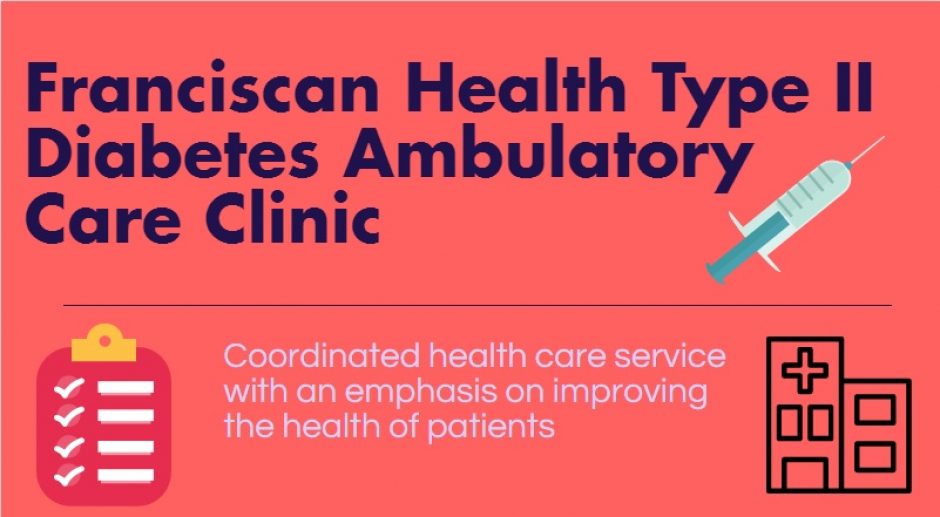
Type II Diabetes
Type II Diabetes is a chronic metabolic disease state characterized by insulin resistance and high blood sugars. There is no cure for diabetes, but through careful management, it is possible to prevent many of the complications from ever manifesting.
Type II Diabetes Prevalence
There are currently over 21 million Americans living who have been diagnosed with diabetes and an estimated another 8 million who are not diagnosed. About 90% of the total diabetes population has Type II diabetes. Diabetes has been on the rise in the United States with currently 9.3% of the population suffering from diabetes.1 Indiana is even worse than the national rate, with 10.7% of Hoosiers living with diabetes.2 If diabetes continues to rise at the current rate, 1 in 3 Americans will have diabetes by 2050. Although any person can get Type II diabetes, being overweight is a major risk factor for developing it with roughly 90% of the patients being overweight or obese. Diabetes can also be deadly and currently ranks as the 7th leading cause of death in the United States.1

Current Practices
Currently, there is a big emphasis in healthcare on the prevention of Type II diabetes. With nearly 86 million Americans having pre-diabetes and the increasing incidence of diabetes, the prevention of this disease is key.1 For those already living with diabetes, it is important to have good control to prevent complications that can lead to morbidity and mortality. The United States spent an estimated $245 billion alone back in 2012 on diabetes patients which is twice as much as what was spent just 5 years before that in 2007. The average diabetes patient has medical expenditures of $7,900 on diabetes alone and total expenditure 2.3 times more than a non-diabetic patient.3 Even with the major spending being used to treat diabetic patients, there is still a lot of work left to be done.
The hemoglobin A1c (HbA1c) test is a screening and monitoring tool that is used to paint the picture of a patients average blood glucose levels. Depending on the patient, a HbA1c of <7% is considered to be controlled. A 2007 by the National Committee of Quality Assurance showed that as many as 22% of the population that has diabetes does not get their HbA1c checked regularly. Additionally, the same study found that of those who do get their HbA1c checked regularly, 14% were uncontrolled as defined as a HbA1c > 9%. It is this population that is uncontrolled that is at the greatest risk of complications and burden on the healthcare system. Their current management is not doing a great enough job at reducing the patient’s HbA1c and these patients need help to lower their Hb1Ac.
Pharmacists’ Role
Pharmacists can play a vital role in the intervention of the management of a Type II diabetic. A systematic review that included 36 different studies looking at pharmacist intervention found positive impacts on in the groups that pharmacists helped with.4 Specifically, a study that took place in Florida involved pharmacist providing education and medication management to uncontrolled diabetics vs. a controlled group of patients who were only seeing their primary care physician. The pharmacists, who were referred to by a primary care physician, saw patients with significantly uncontrolled diabetes management of HbA1C ≥ 9%. The pharmacist met with the patients once a month for 45-60 minutes and billed through code 99211. After 12 months, the diabetic patients that saw a pharmacist for education and disease state management saw a decreases in HbA1c of ≥0.5% when compared to the control group in addition to meeting other outcomes associated with decreased complications. The study concluded that a pharmacist can play a vital role in decreasing the patient’s HbA1c by being able to spend more time with the patients who are most at need.5

In addition to better health outcomes in reducing the patient’s HbA1c and decreasing complications associated with diabetes, the pharmacist also decreases costs to the healthcare system both directly and indirectly. In the Diabetes Ten City Challenge (DTCC), pharmacists were included in a multi-disciplinary team where they educated and coached the diabetic patients at baseline and at the end of the year. They also saw the patient two additional times throughout the year. At the end of the study, not only did they see positive outcomes of decreased Hb1Ac, decreased blood pressure, and improved lipid profile, but also saw an increase in savings. By adding the pharmacist to the collaborative team an estimated $1,079 was saved per patient annually compared to anticipated cost.6
Franciscan Health and Type II Diabetes
Franciscan Health Network has a Diabetes and Endocrinology specialty center where there are currently seven physicians and two nurse practitioners are currently seeing 75-100 patients a day, of which about 75% are there for diabetes. This year the Franciscan Health Accountable Care Organization is requiring all patients that belong to the ACO who also have diabetes meet with one of the specialists at the Diabetes and Endocrinology Center. This is leading to a major increase in the amount of patients that will be seen at the center, but the center is not getting any additional new hires from specialists. Instead, Franciscan Health is turning to using pharmacists to help see some of the patients.
References
-
Statistics about diabetes. American Diabetes Association website. http://www.diabetes.org/diabetes-basics/statistics/. December 12, 2016. Accessed: February 18, 2017.
-
2016 update diabetes. Indiana State Department of Health. http://www.in.gov/isdh/files/2016%20update%20Diabetes.pdf. Accessed February 18, 2017.
-
Diabetes HbA1c (poor control). Health Resources and Services Administration. https://www.hrsa.gov/quality/toolbox/measures/diabetes/. Accessed February 18, 2017.
-
Ayadurai S, Hattingh HL, Tee LBG, Said SN. A narrative review of diabetes intervention studies to explore diabetes care opportunities for pharmacists. J Diabetes Res. doi: 10.1155/2016/5897452.
-
Moreau C, Sando KR, Zambrano DH. Assessing the effect of pharmacist care on diabetes-related outcomes in a rural outpatient clinic. Ann Pharmacother. Published January 7,2017. Doi: 10.1177/1060028016685731.
-
Diabetes ten city challenge. APHA foundation website. http://www.aphafoundation.org/diabetes-ten-city-challenge. Accessed: February 20, 2017.
